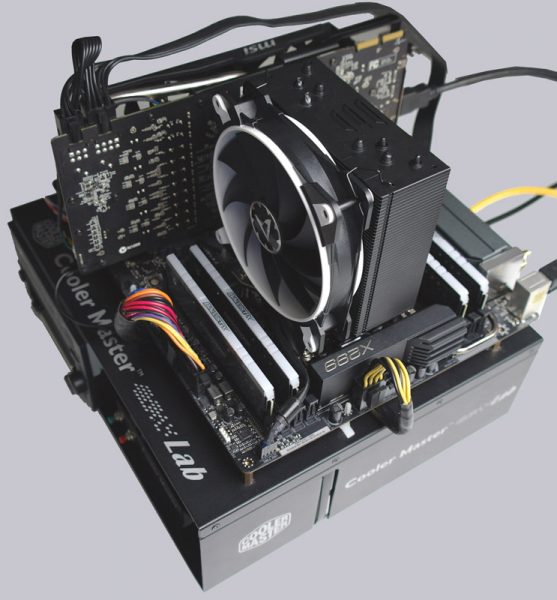
Now we come to another important part of the review: The performance!
Test system …
The following ATX test system was used for the review:
Intel Core i9-7900X Default @ 4000 MHz at approx. 1.150 Volt
ASRock X299 Taichi motherboard
MSI Radeon R9 280 Graphics Card
Arctic Freezer 33 Cooler
Crucial MX200 SSD
Cooler Master Silent Pro M 600W Power Supply
Cooler Master Testbench v1.0
Windows 10 Pro 64-bit and Microsoft Windows 7 Ultimate 64-bit
Using the software Memtest86 the stability was checked and SiSoft Sandra Lite 2017 and AIDA64 was used as benchmark program, since it offers extensive setting options and a quick comparison of the results. The latest versions of SiSoftware Sandra and AIDA64 are available on our Server for download and can be downloaded there at high speed. The CPU-Z download can also be found there.
DDR4 benchmark with SPD values …
First the memory modules are tested on default BLCK with SPD values, whereby the SPD values were given by the manufacturer in the SPD IC and are read out via the mainboard. With default BLCK the timings with the autosettings from the SPD EEPROM were set to 16-18-18-18-38 2T (CAS-TRCD-TRP-TRAS).
Here is a screenshot from CPU-Z 1.84 at 1333.4 MHz / DDR4-2666 and 16-18-18-18-38 2T with 1.20 Volt:
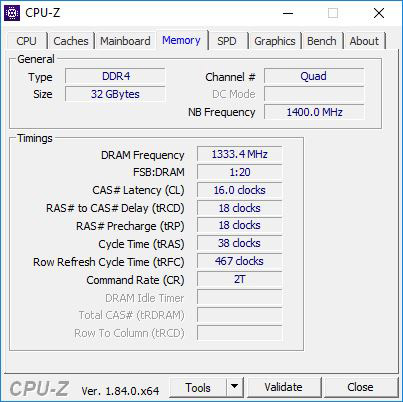
And the following timings output with CPU-Z.
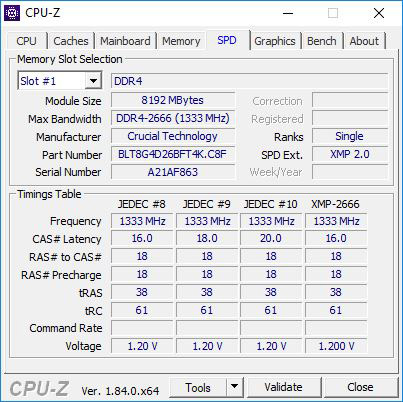
Here is the result of the SiSoftware Sandra benchmark tests:
| Default frequency | Timing | Voltage memory | RAM Bandwidth Integer B/F AVX512/512 | Storage Transaction Throughput | Storage latency |
| 1333.4 MHz | SPD/XMP 16-18-18-38 | 1.20 volts | 50 GB/s | 53.24 MTPS | 32.1 ns |
Here are the corresponding screenshots …
SiSoft Sandra Lite 2017 Memory Bandwidth.
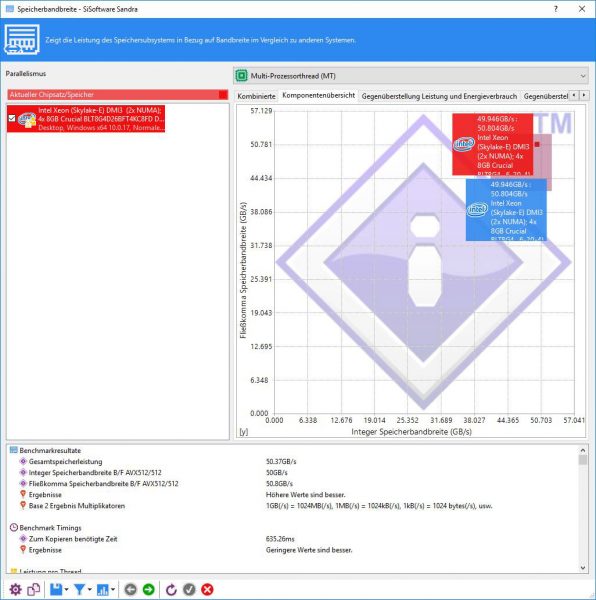
SiSoft Sandra Lite 2017 memory transaction throughput.
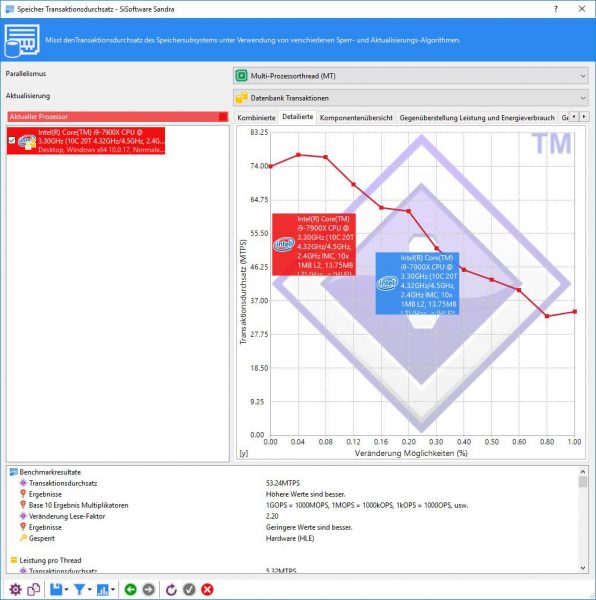
SiSoft Sandra Lite 2017 memory latency.
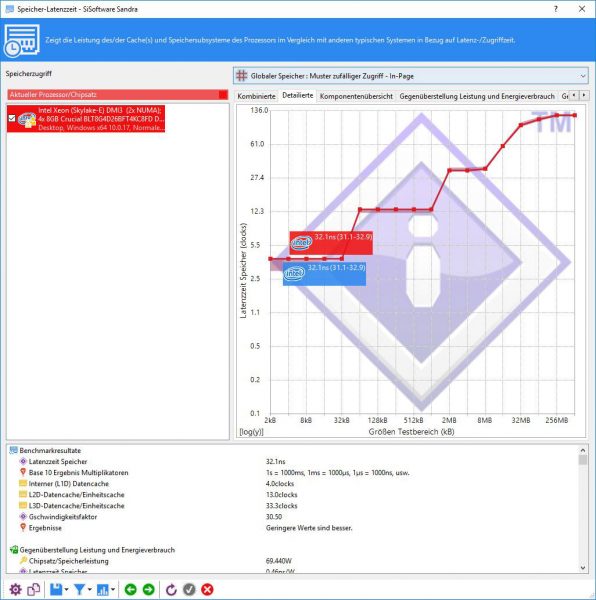
Here is the result of the AIDA64 memory benchmark tests:
| Default frequency | Timing | Voltage memory | Memory Read Throughput | Memory Write Throughput |
| 1333.4 MHz | SPD 16-18-18-38 | 1.20 volts | 70907 MB/s | 63660 MB/s |
Here are the corresponding screenshots…
AIDA64 memory read throughput benchmark.
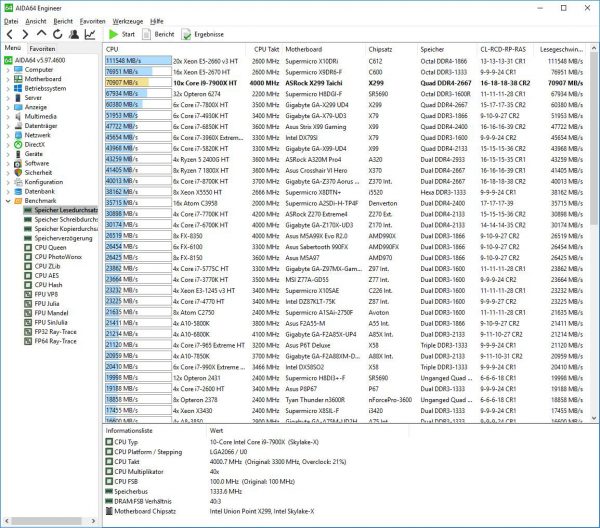
AIDA64 memory write throughput benchmark.
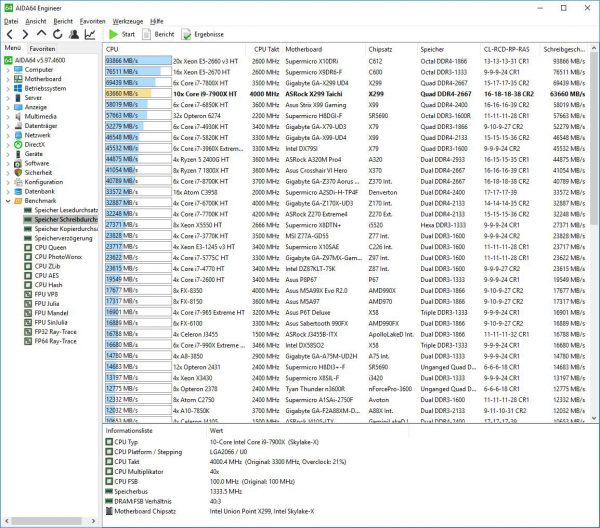
Since the XMP timings are identical, the additional benchmarks are omitted.
DDR4 OC with 1.20 volts …
Now the maximum possible frequency of the memory modules is determined at default 1.20 volts. For this purpose, the memory clock is increased in small steps with a fixed memory timing of 15-15-15-36 2T and 1.20V voltage, as long as the detailed Memtest86 test is still running without errors. The rather long test time ensures that this frequency is really stable for the modules.
Unfortunately we have some bad news here, because the modules could not be overclocked with these timings, quite the contrary, because the 15-15-15-36 2T timings are sharper than the original timings, we could only reach significantly less than DDR4-2666 from the modules at 1.20 volts.
DDR4 OC with 1.35 volts …
Then the highest possible frequency at 15-15-15-36 2T is determined with the maximum manufacturer voltage, which is identical with the default voltage of 1.20 volts for these modules. Since overclocking is out of specification anyway, we decided on an OC voltage of 1.35 volts in order to be able to overclock the memory at least slightly higher.
With an increased memory voltage of 1.35 Volt the DDR4 memory modules could not be overclocked at 15-15-15-36 2T timings either, but could only be operated at 1300.7 MHz, which corresponds approximately DDR4-2600. Officially the company Crucial gives the default DDR4 voltage of 1.20 Volt without losing the warranty!
Here is a snipping screenshot of CPU-Z 1.84 at 1300,70 MHz / DDR4-2600 and 15-15-15-36 2T with 1.35 Volt:
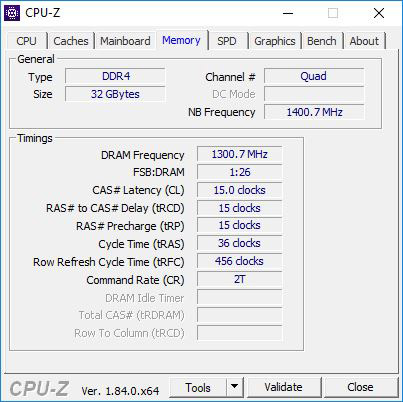
Only with 16-18-18-18-38 2T it was possible to get out a few MHz on DDR4-2800 at 1.35V. All in all, unfortunately not a good overclocking result, because the modules are already operated at their limit with 1.20 volts at DDR4-2666 16-18-18-18-38 2T. Of course, higher frequencies can be achieved with higher voltages or with lower timings, since the timing and the timings are directly interdependent.
However, the heat development is positive, because even under heavy use the internal temperature sensors have only displayed approx. 33°C and our thermal imaging camera occupies this with a thermal imaging temperature of just 28.1°C.
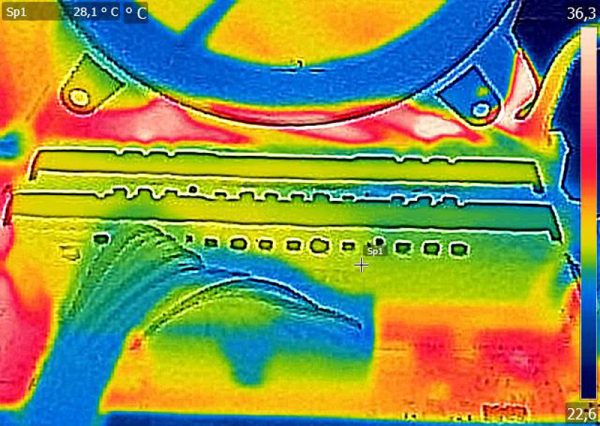
Ballistix Tactical Tracer RGB 32GB DDR4 Kit 4x 8GB DDR4-2666 Conclusion and overall impression …


